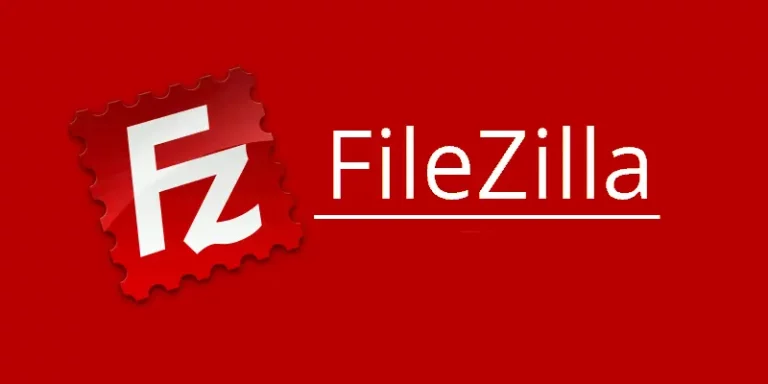Cybersecurity threats are constantly evolving, but one tactic has remained persistently effective for attackers: phishing. Phishing scams—where cybercriminals trick users into providing sensitive information—continue to be a major threat to individuals and organizations.
Despite their longstanding presence in the digital world, these scams have grown more sophisticated, targeting victims through increasingly believable schemes.
In this article, we’ll break down the most current phishing tactics, explain how they work, and provide practical advice on how to avoid falling victim to them. We’ll also highlight real-world examples to illustrate how these scams operate in practice.
Understanding Phishing: The Basics
Before diving into specific tactics, it’s important to understand the fundamentals of phishing. At its core, phishing is a social engineering technique where cybercriminals disguise themselves as legitimate entities to steal information such as login credentials, credit card numbers, or personal identification.
These attacks can be delivered through email, social media, text messages, or even phone calls.
Common Goals of Phishing Attacks:
- Stealing login credentials for online accounts (email, banking, social media)
- Deploying malware or ransomware onto victims’ devices
- Harvesting financial information for fraudulent transactions
- Compromising corporate accounts to launch larger attacks on organizations
Email Phishing: The Classic Threat with Modern Twists
Email phishing remains the most common form of phishing attack.
The attacker sends an email that appears to come from a legitimate source, such as a bank, a well-known retailer, or even a coworker. These emails often contain links to fake websites or attachments with malware.
Example: A Fake PayPal Alert
An email from “PayPal” claims there has been suspicious activity on your account. The message urges you to “click here” to verify your account details.
The email looks professional, featuring the PayPal logo and corporate branding. However, the link directs you to a fake PayPal login page designed to steal your credentials.
Current Trends in Email Phishing:
- Hyper-Personalization: Attackers use personal details (like your name, location, or recent purchases) to make emails seem more legitimate.
- Urgency and Fear: Scammers often create a sense of urgency (“Your account will be locked in 24 hours!”) to provoke emotional reactions and hasty clicks.
- Brand Spoofing: Popular brands like Microsoft, Amazon, and Netflix are frequently impersonated to build trust.
How to Avoid Email Phishing:
- Examine the Sender’s Email Address: Check if the email address is coming from a legitimate domain. Be wary of subtle misspellings like “Paypa1.com” instead of “PayPal.com”.
- Hover Over Links Before Clicking: Without clicking, hover your mouse over links to see the actual URL. If it looks suspicious, do not click.
- Don’t Open Attachments from Unknown Sources: Attachments can contain malware. Always verify the sender before downloading.
- Enable Multi-Factor Authentication (MFA): MFA adds an extra layer of security, requiring a second form of authentication even if your password is compromised.
Spear Phishing: Targeted and Dangerous
Spear phishing is a more sophisticated form of phishing that targets a specific individual or organization. Unlike generic phishing, spear phishing involves researching the victim and crafting a tailored message to increase the chances of success.
Example: CEO Fraud
An employee in the finance department receives an urgent email from what appears to be the company’s CEO. The email instructs the employee to transfer a large sum of money to a “new vendor,” with the transaction marked as time-sensitive. The employee, believing the message to be authentic, follows through, leading to a significant financial loss.
Current Trends in Spear Phishing:
- Business Email Compromise (BEC): Attackers compromise a legitimate business email account and use it to deceive employees or customers.
- Advanced Social Engineering: Attackers may gather information from social media, professional networking sites (like LinkedIn), or public records to tailor their messages.
- Use of Deepfake Technologies: Some spear phishing attacks use deepfake audio or video to impersonate executives or coworkers.
How to Avoid Spear Phishing:
- Verify Requests Through a Secondary Channel: If you receive an unexpected request for sensitive information or a large transfer, verify it by calling or messaging the sender directly, using a known contact method.
- Limit Personal Information Sharing: Be cautious about sharing personal or corporate information on social media or public forums.
- Train Employees on Social Engineering Risks: Ongoing training and simulated phishing tests can help employees recognize suspicious requests.
Smishing and Vishing: Phishing by Phone and SMS
Phishing is no longer confined to email. Attackers now use SMS (smishing) and voice calls (vishing) to trick victims into sharing sensitive information.
Example: Fake Bank Text Message
You receive a text message from what appears to be your bank, claiming that there has been suspicious activity on your account. The message asks you to call a specific number or click a link to “secure” your account. The number leads to a scammer who asks for your banking details, or the link directs you to a phishing website.
Current Trends in Smishing and Vishing:
- Automated Voice Scams: Attackers use robocalls with automated messages claiming to be from legitimate institutions like the IRS or tech support.
- COVID-19-Themed Smishing: With the pandemic, there has been a surge in phishing messages related to vaccine appointments, health benefits, or government relief programs.
- Delivery Notification Scams: Victims receive fake texts claiming issues with package deliveries, urging them to click on a malicious link.
How to Avoid Smishing and Vishing:
- Do Not Trust Caller ID: Phone numbers can be easily spoofed. Always verify the caller’s identity by contacting the company directly.
- Avoid Clicking on Links in SMS: If you receive a message asking you to click a link or call a number, go directly to the official website instead of following the provided information.
- Report Suspicious Calls or Texts: Many organizations, including your bank or phone carrier, have procedures for reporting phishing attempts.
Pharming: Redirecting Victims to Malicious Websites
Pharming attacks involve redirecting users from legitimate websites to fraudulent ones, often without their knowledge. This is done by exploiting vulnerabilities in DNS (Domain Name System) servers or hijacking users’ computers with malware. Unlike phishing, which requires victims to click a malicious link, pharming can occur in the background.
Example: DNS Cache Poisoning
A user types “www.bank.com” into their browser, but due to a compromised DNS server or local host configuration, they are redirected to a fake website that looks identical to their bank’s site. The victim enters their login credentials, which are immediately harvested by the attackers.
Current Trends in Pharming:
- Malvertising: Malicious advertisements that redirect users to phishing websites are becoming increasingly common.
- SSL-Stripping Attacks: Some pharming scams strip websites of their SSL encryption, making them appear as unsecured versions of the legitimate site.
How to Avoid Pharming:
- Keep Software Updated: Ensure that your operating system, browsers, and security software are up-to-date to protect against known vulnerabilities.
- Check for HTTPS: Always verify that the website is secure by checking for “https” in the URL and the padlock icon next to the address bar.
- Use a Reputable DNS Service: Some DNS services, like Google Public DNS or OpenDNS, provide additional security features to protect against DNS attacks.
Social Media Phishing: Exploiting Trust Among Connections
Phishing attacks have also made their way to social media platforms. Attackers exploit the inherent trust users have in their connections, using fake profiles, hacked accounts, or fraudulent links in direct messages.
Example: Fake Giveaway Scam
A popular account on Instagram or Facebook announces a giveaway, asking users to follow a link to claim their prize.
The link directs to a page that asks for personal information or account credentials. Many users, trusting the source, fall for the scam, resulting in identity theft or account compromise.
Current Trends in Social Media Phishing:
- Account Hijacking: Attackers take over a user’s account and send phishing messages to their friends or followers.
- Fake Job Offers: Scammers target users with fake job offers, asking them to click on a malicious link or provide personal information.
- Phishing Bots: Automated bots on platforms like Twitter send out phishing links, often disguised as trending topics or viral content.
How to Avoid Social Media Phishing:
- Be Skeptical of Unsolicited Offers: Whether it’s a giveaway, a job offer, or a “special deal,” treat unsolicited offers with caution.
- Enable Two-Factor Authentication on Social Accounts: This adds an extra layer of security, preventing attackers from accessing your account even if they steal your password.
- Review Privacy Settings: Limit the amount of personal information visible on your social profiles to make it harder for attackers to target you.
Conclusion: Stay Vigilant Against Evolving Phishing Threats
Phishing scams continue to evolve, with attackers employing increasingly sophisticated tactics to deceive their victims.
To stay safe, it’s essential to remain vigilant, adopt cybersecurity best practices, and be cautious when sharing personal or financial information online.
By understanding the latest phishing trends and knowing how to identify and avoid these threats, you can protect yourself





